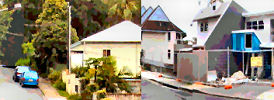 The Australian land tax system creates hot treeless slums. In Queensland, for instance, the Brisbane City Council charges landowners according to the assessed market value of their land. If the Council land-zoning changes to allow medium or high density housing on land previously zoned only for detached homes, then the commercial value of that land goes up as each block will then be able to hold several dwellings instead of one. Although living conditions then become cramped and the quality of life for residents of higher density declines in comparison with that of residents of detached single dwellings, the total financial value of the medium density dwellings inevitably exceeds that of a single residence on the same land.
The Australian land tax system creates hot treeless slums. In Queensland, for instance, the Brisbane City Council charges landowners according to the assessed market value of their land. If the Council land-zoning changes to allow medium or high density housing on land previously zoned only for detached homes, then the commercial value of that land goes up as each block will then be able to hold several dwellings instead of one. Although living conditions then become cramped and the quality of life for residents of higher density declines in comparison with that of residents of detached single dwellings, the total financial value of the medium density dwellings inevitably exceeds that of a single residence on the same land.
Rich aspire now to what working class had 40 years ago

The houses and gardens in this gentrified, expensive area of Brisbane, very close to the CBD, used to belong to working class families, who grew vegetables in their back yards and whose children played in the rainforest in the valley between the houses. Those were the 'bad' old days. Nowadays, of course, ordinary people cannot hope to purchase in this area, and many will never own a home, let alone a home with a garden and a rainforest out back, 20 minutes walk from the Brisbane GPO.
Greed or necessity

But apparently even the current residents of this last green valley in inner Brisbane are going to lose the rainforest out back too, because the opportunity to make a quid by developing every square inch causes neighbours to cave in to greed, or necessity, one by one. As the land values go up, so do rates. And down come the trees...
Holding out
One man has held out now since the late sixties to the three blocks of land adjacent to a fourth with the house where he raised his children, simply because, as an architect, he can see that the forest is of more intrinsic value than the cash-value of the land. He can no longer afford to pay the rates, however, and so is faced with the option of going into debt to build on the property or going into debt to keep the property for nature.
Land-taxes and overpopulation doom nature and raise costs
Has government-engineered population growth in Brisbane made every square inch of this area too expensive to leave unpaved or is there some way out?
In June 2010, it was "reported" on ninesn.com that Brisbane home owners were to be slugged with a 5.04% increase in their council rates (based upon the the fact that the increase would drive up the rates on average by $80 (presumably per year)).
This hike shows how ordinary Brisbane home-owners and mortgagees are being made to pay the price of the mismanagement of our economy by governments at the Federal state and local, particularly due the encouragement of population growth by those governments.
Land-tax system creates slums

The Brisbane City Council charges landowners according to the assessed market value of their land. If the Council land-zoning changes to allow medium or high density housing on land previously zoned only for detached homes, then the commercial value of that land goes up as each block will then be able to hold several dwellings instead of one. Although living conditions then become cramped and the quality of life for residents of higher density declines in comparison with that of residents of detached single dwellings, the total financial value of the medium density dwellings inevitably exceeds that of a single residence on the same land.
People don't like what is happening
In spite of the profits that can be made, many residents choose to forego such profits and continue to live in single detached dwellings. They may do so in order to preserve the suburban lifestyle to which they have become accustomed and to avoid the disruption to their own lives entailed in selling their own residence and moving further away from the centre of the city, work and amenities in order to find a house similar to the one they have sold.
What can be lost
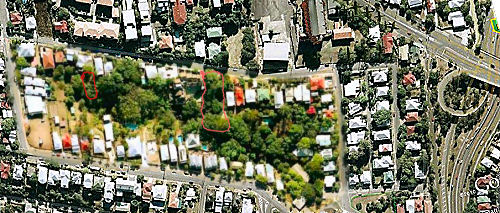
The google-earth map (at least five years old, judging by the current landscape features not shown) of the suburb near the centre of Brisbane (alluded to at the beginning of this article) shows what else can be lost by the rezoning of inner city suburbs. In this photo is a precious patch of suburban rainforest, a thing of utmost rarity in Brisbane, which is currently being gnawed away by subdivision. As mentioned in the introduction, in the past, much of the rainforest at the back of these homes was an effective commons in which local children played. The rainforest also continues to perform a number of valuable ecological services, and to provide shelter and food for wildlife. Without this patch of forest, and other fragments, Brisbane would be a far less pleasant place to live.
Removal of trees causes flooding
Rain, which falls on suburban rainforest, is retained in the soils, bushes and trees. Rain which which falls on rooftops, driveways, concrete footpaths, roadways and mowed lawns, is quickly driven by gravity into lower parts of the city. Towns in which vegetated land has been replaced with housing - particularly high-density housing - are more prone to flooding. A very striking example is the town of Toowoomba, 140 km to the west of Brisbane. over decades, vegetated land on the higher ground surrounding Toowoomba's centre has been cleared and covered with housing. Now all but the lightest of showers cause the centre of Toowoomba to become flooded.
Removal of trees causes climate warming
Those sought-after timber Brisbaner houses with their ornate wooden trimmings and lattice-work verandahs now stand where vast forests once stood. People often don't realise that the wood for those houses came from the forests they replaced. As more and more of Brisbane has been changed from living green into a concrete jungle, it's local climate has become hotter and less pleasant. The vegetation in the photo almost certainly keeps the locals cooler and Brisbane as a whole more healthy. Forested suburban settings are immensely desirable and raise the value of the housing nearby as well as benefiting the wider environment.
Environmentally responsible penalised
Yet landowners who try to preserve vegetation, including rainforest, on their land have been penalised, rather than being rewarded for the service their decision provide to Brisbane. The City Council forces them to pay rates on assessed land values that those environmentally sensitive landholders could only possibly gain from if they were to choose to destroy the vegetation on their land with subdivision and to profit
from medium density housing construction.
The google-earth map photo is about five years old. A considerable amount of urban rainforest has been lost in that time as a result of medium density housing construction. Vegetation known to have been lost has been indicated by red lines on the map. In addition, the rainforest has been encroached upon by extensions of housing, often to construct sub-units down the valley.
If some residents are willing to profit from the destruction of their natural environment, at least those who won't should not be penalised for doing so. Rather than hitting environmentally generous landowners with rate increases, the City Council should discount their rates (and do so retrospectively) for the environmental services they have protected on their land which have benefited the other residents of Brisbane and the native possums, flying foxes, and many beautiful birds, which depend on such fragments of rainforest.
Hobson's choice?
 I know personally that the landowner with the three forested unbuilt blocks now sees little choice but to sell his land because the rates are so high. If he reluctantly goes ahead and the remnant rainforest is destroyed it will be more than a loss of natural beauty for Brisbane residents. Almost certainly the loss of the ecological services will make Brisbane a hotter and uglier. It will certainly not improve it. Those who can afford to will most likely draw on more electrical power to make their homes cool at least on the inside.
I know personally that the landowner with the three forested unbuilt blocks now sees little choice but to sell his land because the rates are so high. If he reluctantly goes ahead and the remnant rainforest is destroyed it will be more than a loss of natural beauty for Brisbane residents. Almost certainly the loss of the ecological services will make Brisbane a hotter and uglier. It will certainly not improve it. Those who can afford to will most likely draw on more electrical power to make their homes cool at least on the inside.
NIMBYs needed now
The poorer classes who once lived unpretentiously but well in this very suburb with far more space than people now do, will swelter in miserable high-density subdivisions and in the treeless outer suburbs. Many will certainly not be able to afford the option of air-conditioning because, as human population has increased and the trees have been destroyed, the heat has increased and so has the cost of housing and of power.
This kind of thing is happening all over Australia.
Brisbane and Australia need more NIMBYs.
Appendix: the decline of amphibians in urban Australia
(This brief appendix has been extracted from nimby's comment Frogs on the decline too of 6 Jan 11.)
Dr Andrew Hamer, based at the University of Melbourne, stressing that reptile and frog habitats need be conserved in residential areas by keeping them as natural as possible, even if they are only small areas. "Our research suggests that many reptile and frog species have been negatively affected by urbanization,” says Dr Hamer. With
higher density living
!--a-->
, more concrete drains rather than rivers and creeks, and less back yards and green wedges, our amphibians and reptile have little chance of being protected.
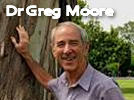 Tree expert Dr. Greg Moore will speak at the Port Phillip Conservation Council Inc. Annual General Meeting on Monday 21st October 2019, 7pm at Longbeach Place,* 15 Chelsea Road, Chelsea (Vic, Australia). Dr. Moore is an engaging and in demand speaker. A botanist and 'plant mechanic' at the University of Melbourne, Greg’s research interests are in horticultural science, revegetation and ecology, specializing in arboriculture. His passion for trees is centred around understanding how trees cope with their environment and promoting the benefits trees provide in urban spaces.
Tree expert Dr. Greg Moore will speak at the Port Phillip Conservation Council Inc. Annual General Meeting on Monday 21st October 2019, 7pm at Longbeach Place,* 15 Chelsea Road, Chelsea (Vic, Australia). Dr. Moore is an engaging and in demand speaker. A botanist and 'plant mechanic' at the University of Melbourne, Greg’s research interests are in horticultural science, revegetation and ecology, specializing in arboriculture. His passion for trees is centred around understanding how trees cope with their environment and promoting the benefits trees provide in urban spaces.

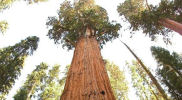 Old trees contribute more to carbon storage than previously thought in a new international study that included researchers from the University of Melbourne. The study demonstrated that tree growth rates increased continuously with size, and in some cases, large trees appeared to be adding the carbon mass equivalent of an entire smaller tree each year. The significance of this study is that big old trees are better at absorbing carbon from the atmosphere than previously thought. (Candobetter.net Editor: And that's not all that old tree do -
Old trees contribute more to carbon storage than previously thought in a new international study that included researchers from the University of Melbourne. The study demonstrated that tree growth rates increased continuously with size, and in some cases, large trees appeared to be adding the carbon mass equivalent of an entire smaller tree each year. The significance of this study is that big old trees are better at absorbing carbon from the atmosphere than previously thought. (Candobetter.net Editor: And that's not all that old tree do -  The study was published in the journal Nature this week. Contributing author, Associate Professor Patrick Baker, an ARC Future Fellow at the Melbourne School of Land and Environment, University of Melbourne, said,
The study was published in the journal Nature this week. Contributing author, Associate Professor Patrick Baker, an ARC Future Fellow at the Melbourne School of Land and Environment, University of Melbourne, said,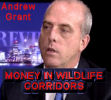 CO2 Group's Chief CEO, Andrew Grant says that anthropogenic climate change science is quite simple really: "It's a function of increased population on the earth." Candobetter.net received the following as a press release today. We obviously like the idea of wildlife corridors connecting national parks. By the same token, nothing in the corporate or the government area can be taken at face value. Until the corridors are established; until we can see that more is not taken away by related interests somewhere else, we have to remain cautious. Nonetheless, on face value, this is cheering news. So is the Chief CEO of CO2 Group's attitude to human population growth and carbon emissions.
CO2 Group's Chief CEO, Andrew Grant says that anthropogenic climate change science is quite simple really: "It's a function of increased population on the earth." Candobetter.net received the following as a press release today. We obviously like the idea of wildlife corridors connecting national parks. By the same token, nothing in the corporate or the government area can be taken at face value. Until the corridors are established; until we can see that more is not taken away by related interests somewhere else, we have to remain cautious. Nonetheless, on face value, this is cheering news. So is the Chief CEO of CO2 Group's attitude to human population growth and carbon emissions.


 Delightful koala pictures in this film
Delightful koala pictures in this film click image to see film.
click image to see film.
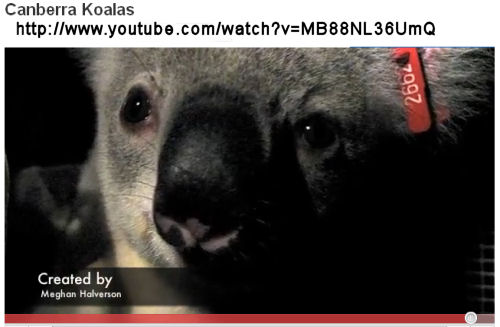
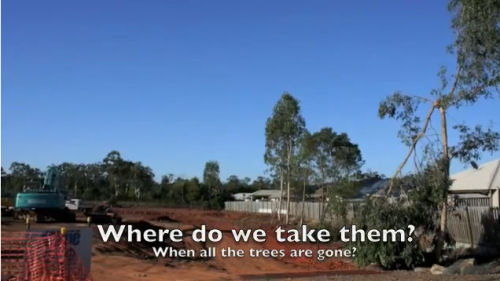
 The Australian land tax system creates hot treeless slums. In Queensland, for instance, the Brisbane City Council charges landowners according to the assessed market value of their land. If the Council land-zoning changes to allow medium or high density housing on land previously zoned only for detached homes, then the commercial value of that land goes up as each block will then be able to hold several dwellings instead of one. Although living conditions then become cramped and the quality of life for residents of higher density declines in comparison with that of residents of detached single dwellings, the total financial value of the medium density dwellings inevitably exceeds that of a single residence on the same land.
The Australian land tax system creates hot treeless slums. In Queensland, for instance, the Brisbane City Council charges landowners according to the assessed market value of their land. If the Council land-zoning changes to allow medium or high density housing on land previously zoned only for detached homes, then the commercial value of that land goes up as each block will then be able to hold several dwellings instead of one. Although living conditions then become cramped and the quality of life for residents of higher density declines in comparison with that of residents of detached single dwellings, the total financial value of the medium density dwellings inevitably exceeds that of a single residence on the same land.



 I know personally that the landowner with the three forested unbuilt blocks now sees little choice but to sell his land because the rates are so high. If he reluctantly goes ahead and the remnant rainforest is destroyed it will be more than a loss of natural beauty for Brisbane residents. Almost certainly the loss of the ecological services will make Brisbane a hotter and uglier. It will certainly not improve it. Those who can afford to will most likely draw on more electrical power to make their homes cool at least on the inside.
I know personally that the landowner with the three forested unbuilt blocks now sees little choice but to sell his land because the rates are so high. If he reluctantly goes ahead and the remnant rainforest is destroyed it will be more than a loss of natural beauty for Brisbane residents. Almost certainly the loss of the ecological services will make Brisbane a hotter and uglier. It will certainly not improve it. Those who can afford to will most likely draw on more electrical power to make their homes cool at least on the inside.
Recent comments